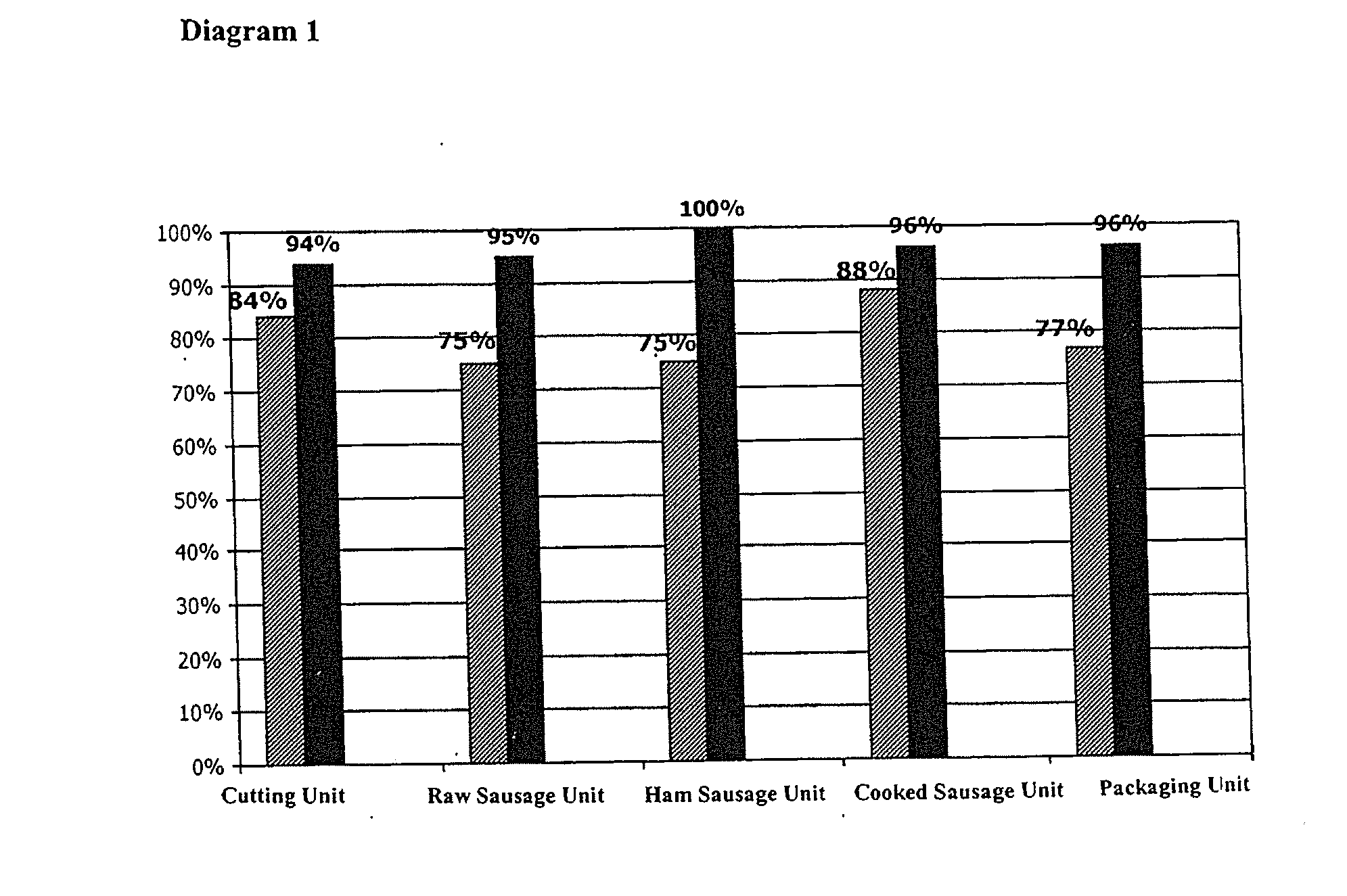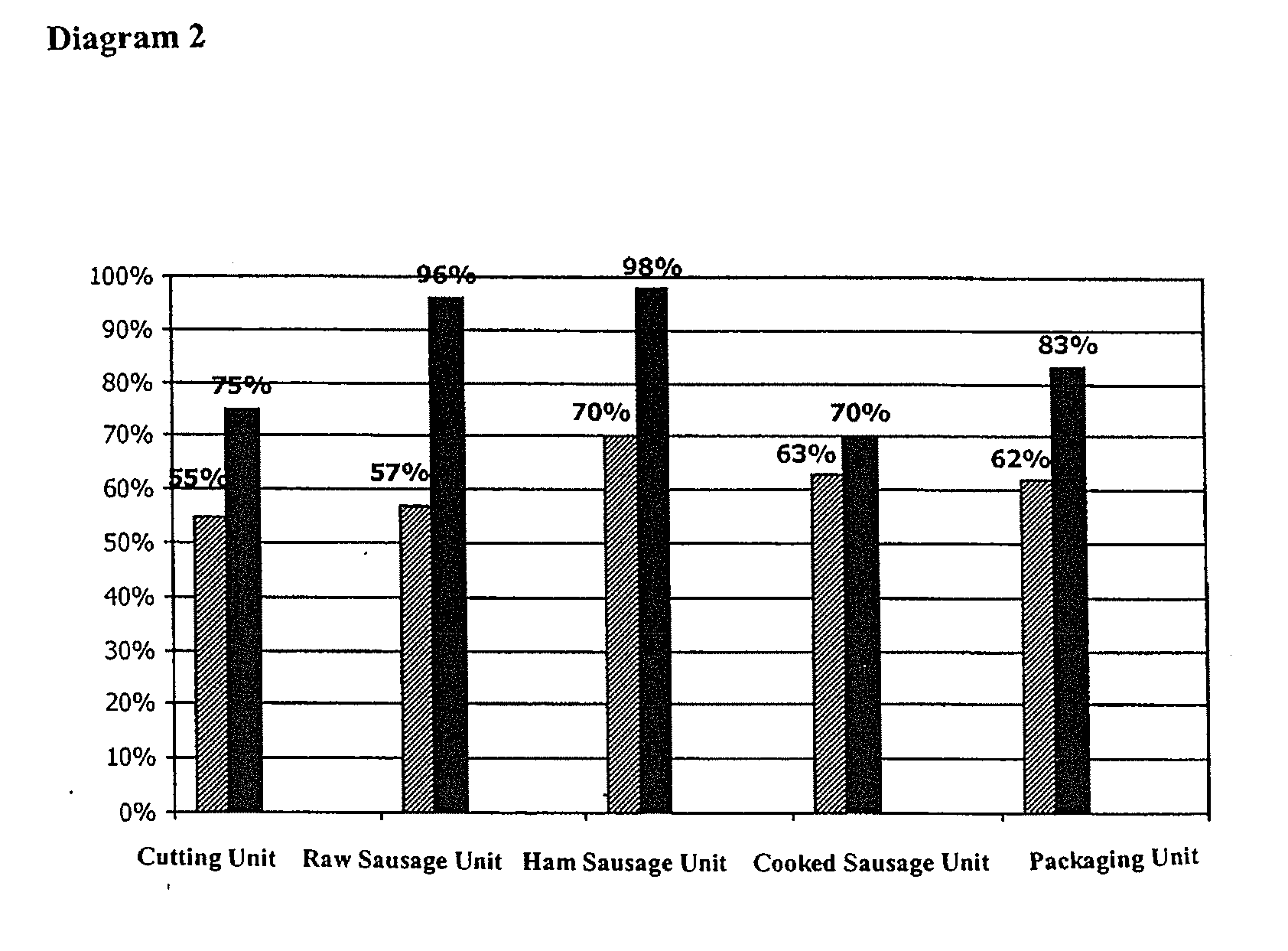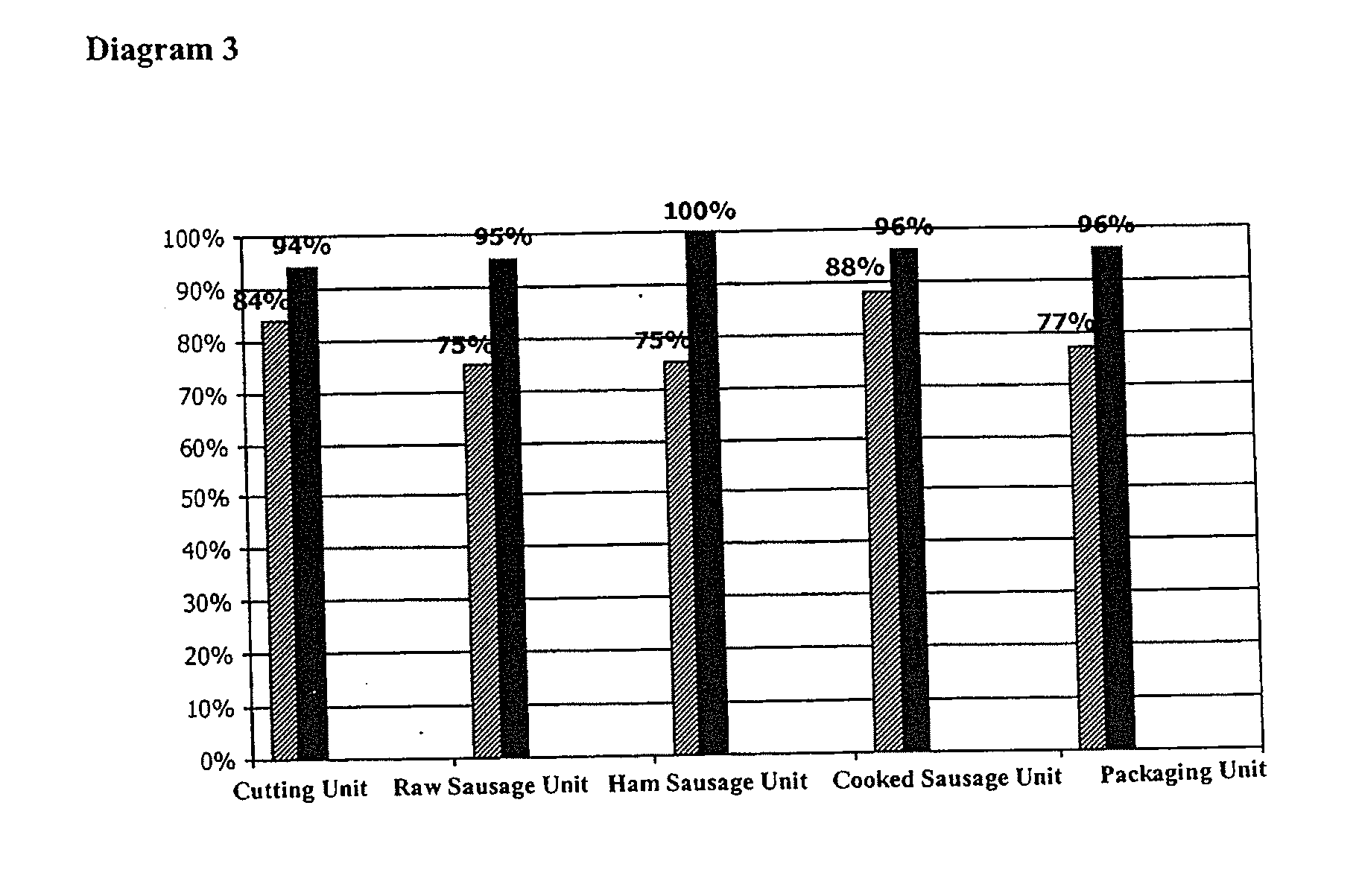Method for in-process decontamination in food preparation and processing and for reducing microbial content in cosmetics, pharmaceuticals, daily-care products and animal and plant food and for treatment of surfaces
a technology of in-process decontamination and food preparation, applied in the field of in-process decontamination of food industry installations, can solve the problems of stoppage of production, health hazards, and insufficient reduction of microbial content by conventional agents, and achieve the effect of reducing microbial conten
- Summary
- Abstract
- Description
- Claims
- Application Information
AI Technical Summary
Benefits of technology
Problems solved by technology
Method used
Image
Examples
examples
[0036]Performing of a Laboratory Test with Nades
[0037]A microbial suspension with microbes washed only three times is prepared, one milliliter of this suspension being added to and mixed with 5 ml of an appropriate NADES dilution (30, 10, 5, 3, 2, 1 or 0.5 vol. %). The period of time during which this bacterial suspension-NADES mixture acts is at least 10 seconds before 5 ml of a casein-soy nutrient medium (CSL) or of a casein-soy nutrient medium (CSL) with dextrose was added for deactivating NADES.
[0038]This mixture is mixed and incubated until distinct colonies were formed and these are counted in order to measure the reduction performance.
Laboratory Tests According to the Guidelines of the Deutsche Gesellschaft für Krankenhaushygiene (DGHK) [German Society for Hospital Hygiene]
[0039]Testing for the efficacy of a disinfectant according to the guidelines of the German Society for Hospital Hygiene (DGHK) is performed with defined strains of the bacteria Staphylococcus aureus...
PUM
 Login to View More
Login to View More Abstract
Description
Claims
Application Information
 Login to View More
Login to View More - R&D
- Intellectual Property
- Life Sciences
- Materials
- Tech Scout
- Unparalleled Data Quality
- Higher Quality Content
- 60% Fewer Hallucinations
Browse by: Latest US Patents, China's latest patents, Technical Efficacy Thesaurus, Application Domain, Technology Topic, Popular Technical Reports.
© 2025 PatSnap. All rights reserved.Legal|Privacy policy|Modern Slavery Act Transparency Statement|Sitemap|About US| Contact US: help@patsnap.com



